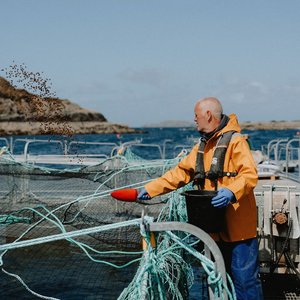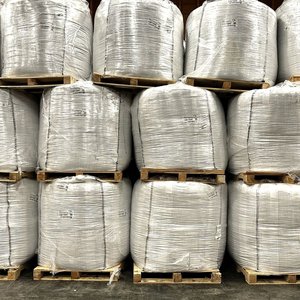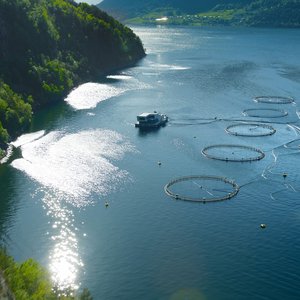Aquaculture production is forecast at 69.9 million tonnes, up 5.4 per cent on the 2012 estimate, according to the latest Food Outlook report from FAO. This compares with a 0.6 per cent drop in capture fisheries from 90.6 to 90.1 metric tonnes over the same period.
Fish consumption per capita keeps growing with aquaculture in the process of overtaking capture fisheries as the main source of supply for direct human consumption, according to the FAO report.
Extracted highlights
Tilapia: Official figures for 2012 tilapia production in China have not been released yet, but total volume has been estimated at 1.5 million tonnes, up from 1.4 million tonnes in 2011, in response to increased domestic and foreign market demand. However, thus far in 2013, industry sources report at least a 30 percent decline in production in the first half of the year, due to farmers’ financial constraints in restocking of ponds. Demand in consuming countries is increasingly being met by domestic producers, and local production is keeping the market firm as tilapia farming gains more attention worldwide. In addition. Taiwan is expanding production and increasing market share, African producers are now seeing tilapia’s potential for domestic consumption and for export. Tilapia from Uganda will soon be available on the market in Germany, and the African Development Bank (AFDB) is financing tilapia projects in Zimbabwe.
Pangasius: Pangasius production is forecast to reach about 800,000 tonnes in 2013, much lower than the target of 1.2–1.5 million tonnes. Production in the first seven months of 2013 was lower than a year ago with output from the main producing regions down by an average of 10 percent. Steady demand from across the globe is expected to drive production development in other producing countries, particularly in Asia.
Shrimp: Lower production of farmed shrimp due to disease problems in Asia and Latin America during the first half of the year and a poor supply forecast for the rest of the year has pushed shrimp prices higher worldwide. The early mortality syndrome (EMS) problems in Thailand mean this year’s harvest production almost certainly will be half of last year’s volume. However, there have been recent signs that EMS is abating, and a supply increase is projected for the second half of 2013. Viet Nam’s production volume has also been negatively affected by disease, but India and Indonesia are expected to make up some of the production shortfall, with sources in the latter predicting total production of above 500,000 tonnes in 2013.
Seabass and seabream: In Greece, production is down, with companies suffering from tight credit and rising feed costs, but Turkey’s production continues to grow, setting Turkey on the path to become the largest producer of these species.
The long-term supply outlook is for little or no growth, with reports stating that Chilean farmers will again have to adapt to maximum pen density restrictions which are being implemented in an attempt to control the spread of disease. It is hoped the resulting reduction in supply will boost prices and improve the profitability of Chilean farms that, despite good demand, continue to struggle and are likely to face future increases in feed prices. These suppliers will have to look to newer markets such as Brazil, China and also the Norway dominated EU to compensate for Japan’s declining interest in seafood.
Fishmeal: The rising price trend for fishmeal continued through the second quarter of 2013, increasing approximately 43 percent between mid-2008 and mid-2013, while soymeal prices remained relatively flat during the same period. This growing price differential may provide incentives for terrestrial farmers to substitute fishmeal with less expensive feed alternatives.
Total fishmeal production in Chile and Peru declined 21 percent year-on-year in the first half of 2013, although Denmark and Norway made up some of the production gap. China was the main market for Peruvian fishmeal exports in 2013. In Europe, Iceland’s fishmeal production has been limited because of strong demand for mackerel and herring for human consumption, while Norway reported limited catches this summer. Demand in Germany
Fish oil: The fish oil price continued its steady rise, reaching new highs in mid-2013. Growing demand for aquaculture products will also increase demand and, hence, prices, as fish oil is the primary ingredient in fish feeds for carnivorous fish species. Demand for fish oil as a nutritional supplement also continues to grow. Quota restrictions on raw material species will also contribute to price pressure and volatility.
Global consumption of farmed fish, which is expected to surpass the consumption of wild-caught species in 2015 (if not sooner), will ensure the demand trend remains strong. Fish oil production declined 22 percent in the first half of 2013 compared with 2012, mainly as a result of lower production in Latin America that saw Peruvian exports decline substantially compared with 2013. Chilean exports rose, while US exports of fish oil remained stable.
FAO Food Outlook - November 2013
Food Outlook is a biannual publication focusing on developments affecting global food and feed markets. The report focuses on developments in international markets, giving comprehensive assessments and forecasts on a commodity by commodity basis. The November 2013 issue includes a special feature on the revised methodology for the Food Price Index calculation.







